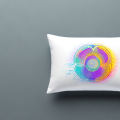When it comes to muscle recovery, there are a variety of tools and techniques that athletes and fitness enthusiasts can use to help their bodies heal faster and more effectively. One such tool that has gained popularity in recent years is the stick roller. In this article, we will explore the benefits of using a stick roller for muscle recovery, as well as the science behind its effectiveness and best practices for using it in your fitness routine.
Understanding the Basics of Muscle Recovery
Before we dive into the benefits of using a stick roller, it’s important to understand the basics of muscle recovery. When we exercise, we create small tears in our muscles that need to be repaired in order for our bodies to become stronger and more resilient. This process of repairing and rebuilding muscles is what leads to the gains we see in strength and stamina over time.However, this process can also be painful and uncomfortable. When our muscles are sore or stiff, it can be difficult to continue with our regular workouts or daily activities. This is where muscle recovery tools like the stick roller come in.
What is a Stick Roller and How Does it Work?
A stick roller is a cylindrical tool that is typically made of foam or plastic. It features a number of small, raised nodules or ridges along the surface. To use a stick roller, you simply roll it back and forth over your muscles, using your body weight to apply pressure.The idea behind using a stick roller is to help break up adhesions or knots in your muscles, which can cause pain, stiffness, and decreased range of motion. By rolling over these areas, you can help increase blood flow to the affected muscles, which can speed up the healing process and reduce inflammation.
The Science Behind Stick Rollers and Muscle Recovery
While the use of stick rollers may seem like a new trend, the science behind their effectiveness has actually been studied for decades. One study published in the Journal of Athletic Training in 2007 found that foam rollers – which are similar to stick rollers in their design and usage – were able to improve flexibility and reduce muscle soreness in a group of college-aged men.Another study published in the Journal of Sports Sciences in 2015 found that foam rolling was able to significantly increase knee joint range of motion in a group of female athletes. These studies suggest that the use of stick rollers can be a valuable tool for athletes and fitness enthusiasts looking to improve their muscle recovery process.
Using a Stick Roller for Pre-Workout Warmup
In addition to using a stick roller for post-workout recovery, it can also be a helpful tool for warming up your muscles before a workout. Rolling the stick over your muscles can help increase blood flow to the area, which can help prepare your body for exercise.To use a stick roller for pre-workout warmup, start by rolling it over the major muscle groups in your body – such as your quads, hamstrings, and calves – for a few minutes at a time. This can help increase circulation, loosen up tight muscles, and get your body ready for the workout ahead.
How to Use a Stick Roller for Post-Workout Cool Down
After your workout is complete, using a stick roller can also be a helpful tool for cooling down your muscles and aiding in the recovery process. Roll the stick over the areas of your body that feel sore, stiff or tight, for a few minutes at a time. This can help increase blood flow to the affected muscles, as well as aid in the removal of lactic acid and other waste products that can build up during exercise.
The Best Time to Use a Stick Roller for Optimal Muscle Recovery
So, when is the best time to use a stick roller for muscle recovery? Ideally, you should be using it both before and after your workouts. This can help prepare your muscles for exercise, as well as aid in the healing process after your workout is complete.However, even if you are not able to use a stick roller both before and after your workouts, using it at any time can be a helpful tool for enhancing your muscle recovery process.
Different Types of Stick Rollers and Their Benefits
There are a variety of stick rollers available on the market today, each with their own unique benefits and features. Some rollers may feature more or less dense nodules, depending on the amount of pressure you are looking to apply to your muscles. Others may be made of different materials – such as foam or plastic – which can affect the level of comfort and support they provide.When choosing a stick roller, it’s important to consider your individual needs and preferences. Do you have particularly tight or sore muscles? Are you looking for a roller that can easily fit in your gym bag for on-the-go use? By considering these factors, you can find a stick roller that will best suit your needs.
Common Mistakes to Avoid When Using a Stick Roller
While using a stick roller may seem straightforward, there are a few common mistakes that are important to avoid. One of the most common mistakes is using too much pressure or rolling too quickly over your muscles. This can cause additional pain and discomfort, and may not be as effective at breaking up adhesions.It’s also important to avoid using a stick roller on areas of your body that are already injured or inflamed. This can cause further damage and may slow down the healing process.
Combining Stretching and Foam Rolling for Maximum Muscle Recovery
For those looking to optimize their muscle recovery process, combining the use of a stick roller with stretching can be a helpful technique. By stretching your muscles both before and after using the roller, you can help improve flexibility, increase blood flow, and speed up the healing process.Focus on stretches that target the major muscle groups in your body, such as your hamstrings, quads, and back. Hold each stretch for 20-30 seconds before moving on to the next, and be sure to breathe deeply throughout.
How to Incorporate a Stick Roller into Your Fitness Routine
If you’re new to using a stick roller, it can be helpful to start by incorporating it into your fitness routine gradually. Begin by using it for just a few minutes at a time, focusing on the areas of your body that feel sore or tight.Over time, you can gradually increase the amount of time you spend using the roller, as well as experiment with different techniques and pressure levels. By incorporating a stick roller into your routine in a mindful and intentional way, you can help enhance your muscle recovery process and improve your overall fitness level.
DIY Alternatives to Commercially Available Stick Rollers
While there are a number of commercially available stick rollers on the market today, there are also plenty of DIY alternatives that you can make at home. One such option is to use a PVC pipe, wrapped in foam or yoga mat material to provide cushioning and comfort.Alternatively, you can use a tennis ball or lacrosse ball for targeted pressure on specific areas of your body. Simply place the ball on a flat surface and gently lower your body weight onto it, using your hands and feet to roll the ball over the affected area.
The Role of Nutrition in Muscle Recovery: Tips and Tricks
While using a stick roller can be a helpful tool for enhancing your muscle recovery process, it’s important to remember that nutrition also plays a key role in this process. Eating a balanced diet that includes plenty of protein, healthy fats, and complex carbohydrates can help provide your body with the nutrients it needs to repair and rebuild muscle tissue.Additionally, staying hydrated is also essential for muscle recovery. Be sure to drink plenty of water throughout the day, both during and after your workouts.
Using a Stick Roller as Part of Injury Rehabilitation
In addition to aiding in the muscle recovery process for general workouts, a stick roller can also be a helpful tool for those dealing with injuries. Rolling over the affected area gently and slowly can help increase blood flow and mobility, as well as relieve pain and stiffness.However, it’s important to consult with a healthcare provider before using a stick roller for injury rehabilitation, and to follow any recommended treatment plans for your specific injury.
Conclusion
In conclusion, the benefits of using a stick roller for muscle recovery are vast and varied. From reducing soreness and stiffness to aiding in injury rehabilitation, this simple tool can be a valuable addition to any fitness routine. By using a stick roller mindfully and intentionally – both before and after workouts – you can help enhance your muscle recovery process and take your fitness to the next level.





